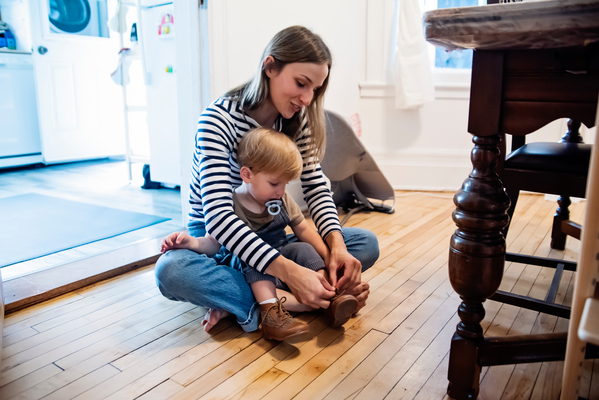In what might be one of the most underappreciated technological breakthroughs of our time, Alphabet‘s Google DeepMind has accomplished something deceptively difficult — teaching a robot to tie shoelaces.
During her highly anticipated annual trends presentation at South by Southwest (SXSW) in Austin, Texas, Amy Webb — founder and CEO of Future Today Strategy Group — highlighted this achievement as a pivotal moment in robotics history. While it might seem mundane compared to flashier AI developments, Webb insists this breakthrough is “hard to overestimate” in its importance and serves as “a huge harbinger of what’s to come.”
The challenge of shoelace-tying illustrates perfectly why robotics has struggled with tasks humans find simple. As Webb explains in the video interview with Motley Fool analyst Rex Moore below, the process requires sensing and managing tension in specific ways, finessing materials with different properties, and executing movements that typically require lived experience.
This breakthrough has significant implications for the growing field of soft robotics, which Nick Bartlett, foresight director at Future Today Strategy Group, notes has been a critical area of investment for companies like Amazon. The e-commerce giant has long sought robots capable of gently but securely grasping varied items in warehouses, a seemingly simple task that has proven remarkably challenging. The development of both improved grasping mechanisms and the AI to control them could transform industries from manufacturing to healthcare, potentially creating enormous investment opportunities as the technology matures.
Watch our full interview below to hear Webb and Bartlett discuss the far-reaching implications of this shoelace breakthrough and how it connects to broader trends in robotics, artificial intelligence, and human-machine interaction. As investors increasingly look beyond the AI hype cycle toward tangible applications, understanding these pivotal but easily overlooked milestones could provide crucial insight into which technologies — and companies — are truly positioned for long-term success.
A full transcript follows the video.
Transcript:
Rex Moore: At the end you mentioned an “ah-ha” moment or a very pivotal moment for us as humans. It was actually a robot tying a shoe. Why is that?
Amy Webb: So this is crazy to think about because it’s something that we do. We both have kids and, you know, like teach your kid how to tie a shoe. It takes a little bit of time, but they they all learn how to do it. Robots have never learned how to tie shoes. And part of the reason is it requires, you have to be able to sense and feel, tension in a particular way.
You have to be able to finesse the laces. It’s soft, but also hard. It’s it’s a shockingly difficult thing that without the lived experience, it’s hard to learn how to do that. So Google DeepMind like Google, built a robot that is now capable of tying shoes and AI, and it’s a it’s not a great not let’s let’s put it that way.
It’s not like the world’s greatest lace laces situation, but, it is such a breakthrough in the field of robotics. It’s hard to overestimate just how important it was. And it’s a huge harbinger of what’s to come.
Nick Bartlett: And tangentially to that, you know, if you think about it flowing off of that soft robotics and thinking about the the robot’s ability to grasp those laces gently enough to be able to tie them, but also firmly enough to make the knot. That’s been a huge area that a lot of companies have been looking to invest in. And you think about Amazon has been playing in this space for ages because they would love to be able to just send a robot down the aisle and just pick and grasp random kind of oddly shaped things, but not break them.
So imagine if, you know, the robot tried to pick up my glasses. It really only has one speed. Most of the time it’s crush. You know? So, there’s a lot of great investment and a lot of great work being done right now in soft robotics. And not only just teaching the robot how to grasp, you know, with some variability, like a human can, but also creating a physical grasping mechanism that is soft to the touch and kind of can mold and conform.
Suzanne Frey, an executive at Alphabet, is a member of The Motley Fool’s board of directors. John Mackey, former CEO of Whole Foods Market, an Amazon subsidiary, is a member of The Motley Fool’s board of directors. Rex Moore has positions in Alphabet. The Motley Fool has positions in and recommends Alphabet and Amazon. The Motley Fool has a disclosure policy.

